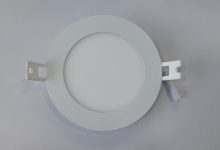Choosing the Right Roof Material for Your Home

Choosing the right roof material for your home is a critical decision, impacting not only the durability and maintenance of your roof but also the overall aesthetic and value of your property.
This guide will help you navigate through the plethora of options available, ensuring you select the best material suited to your climatic conditions, style preferences, and budget.
1. Climate Considerations
The local climate plays a significant role in determining the most suitable roofing material for your home:
- Hot and Sunny Climates: Metal roofs are excellent in these conditions due to their heat-reflective properties, helping keep your home cooler while being durable against UV rays.
- Rainy and Windy Climates: Asphalt shingles are favored for their affordability and effectiveness in moderate weather, but may need enhanced installation techniques to withstand high winds.
- Cold and Snowy Climates: Both slate and metal roofs are ideal as they efficiently shed snow and resist cracking in freezing temperatures.
Always check local building codes as they may influence your material choice due to specific regional requirements.
2. Exploring Popular Roofing Materials
Each roofing material offers unique benefits and challenges:
- Asphalt Shingles: Widely used due to their cost-effectiveness and versatility, typically lasting 15-30 years with proper maintenance.
- Metal Roofing: Offers longevity (40-70 years) and minimal upkeep, available in various styles like panels and shingles, perfect for adding a contemporary edge to your home.
- Slate Roofing: Provides a luxurious look and exceptional durability (over 100 years), though it is one of the more expensive options.
- Tile Roofing: Clay or concrete tiles deliver a traditional Mediterranean look and are very durable (50-70 years), but require a robust structural support due to their weight.
- Wood Shingles: Offer a natural aesthetic but demand more maintenance and are less resistant to fire and moisture.
Considering environmental impacts is also crucial; metal roofs, for instance, are often made from recycled materials and can help reduce your energy consumption due to their reflective properties.
3. Considering the Costs
Understanding the full cost involved in a roof installation is vital:
- Installation Costs: These can vary widely based on the material’s complexity. Metal roofs, for example, require specific skills and tools, potentially increasing the labor costs.
- Maintenance Requirements: Durable materials like metal and slate may carry higher initial costs but typically require less maintenance over their lifespan compared to options like wood shingles.
- Longevity: Investing in a more durable material can be cost-effective over time, reducing the frequency and costs associated with roof replacements.
It’s wise to engage professional roofing services to get a detailed estimate that includes all potential costs.
4. Matching Roofing With Your Home’s Style
The material you choose should complement the architectural style of your home:
- Traditional Homes: Classic materials like asphalt shingles, slate, or clay tiles enhance the timeless appearance.
- Modern Homes: Metal roofing can be an excellent match due to its sleek lines and modern appeal.
- Rustic Homes: Wood shingles or shakes are perfect for adding warmth and a rustic charm.
Don’t hesitate to use online resources to visualize how different materials might look on your home. Many roofing services provide digital tools that allow you to preview various roofing options on a photo of your home.








